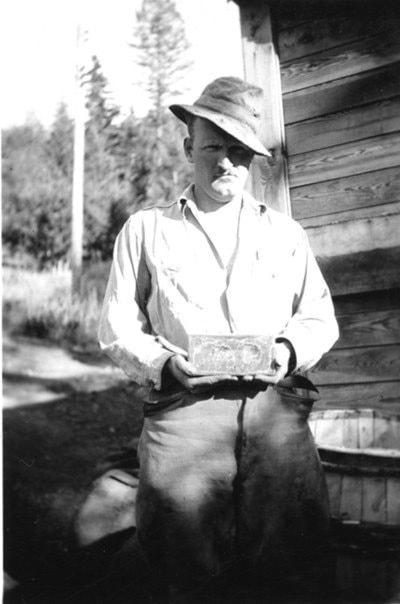Up until very recently, there was a landmark located just to the west of Highway 3A at the south entrance to Olalla marking the location of one of the most easily visible mining properties to residents of the Lower Similkameen.
Valley residents travelling to Penticton have passed by the slowly decaying wooden bunker that marks the location of a nearby adit (tunnel) countless times on trips to the Okanagan.
Situated about 50 metres north of the highway, sitting amidst a couple of manufactured homes at the base of the mountainside, the portal was evidence of prospecting work performed in 1948. Back then the prospect was a property belonging to Hedley Monarch Gold Mines Limited, with offices located on Granville Street in Vancouver.
The company traded three million shares at roughly 50 cents in value in 1948, according to a report in the 1948 Report to the Minister of Mines.
It further described the property as being bisected by “the newly paved and reconstructed Southern Trans-Provincial Highway.”
Although the company did no mining on the property in 1948, a lease had been negotiated between Hedley Monarch, August D. Cameron and three partners.
The report stated that ore was shipped from the “Shepherd adit,” confining activities to drifting and cutting box-holes on the “Sweetener” vein. A bunker was built at the portal of the Shepherd adit and the mined ore was trucked to Keremeos, where it was loaded onto a Great Northern Railway car for shipment to a Tacoma smelter.
In November of that year two men were employed, with production amounting to 320 tons mined, and 255 tons of ore actually shipped, grading 137 ounces of gold and 128 ounces of silver. At today’s prices, that ore was worth approximately $642 /ton in gold values and $12 ton in silver.
The property’s mining rights are currently held by a Similkameen resident today.
Sadly, a piece of visible history was erased from the landscape in July of this year when the wooden bunker was removed. It had been a familiar sight at that location for 54 years.
Further up in the hills of the East Similkameen lie a number of other properties that supported local jobs in past years, some of which continue to attract the attention of the mining industry.
The best known of these properties are located along the Cawston-Fairview Road, and were responsible for the first settlement in the South Okanagan - the old townsite of Fairview.
Properties like the Stemwinder, Morning Star, Grandoro, Twin Lakes, Dolphin, Sunrise and Fairview all have production records associated with them in the BC Ministry of Energy, Mines and Petroleum Resources MINFILE database. A summary of the production records from all these properties reveals that the hills east of Cawston and west of Oliver have been a source of mineral wealth in the past.
These properties continue to be held by private interests today. Major mining companies last took a serious look at the area in the late 1980’s - but based on past history it is doubtful that a multi-national mining company would be interested in what are relatively low tonnage deposits, from an industry point of view.
However, under the right economic circumstances, and political climate, small, low tonnage operations may prove economically viable in the future - in much the same way they have done several times in the past. New technologies in exploration and development may also contribute to making these properties economically viable again as well - as history has a curious habit of repeating itself, especially in the mining industry.
